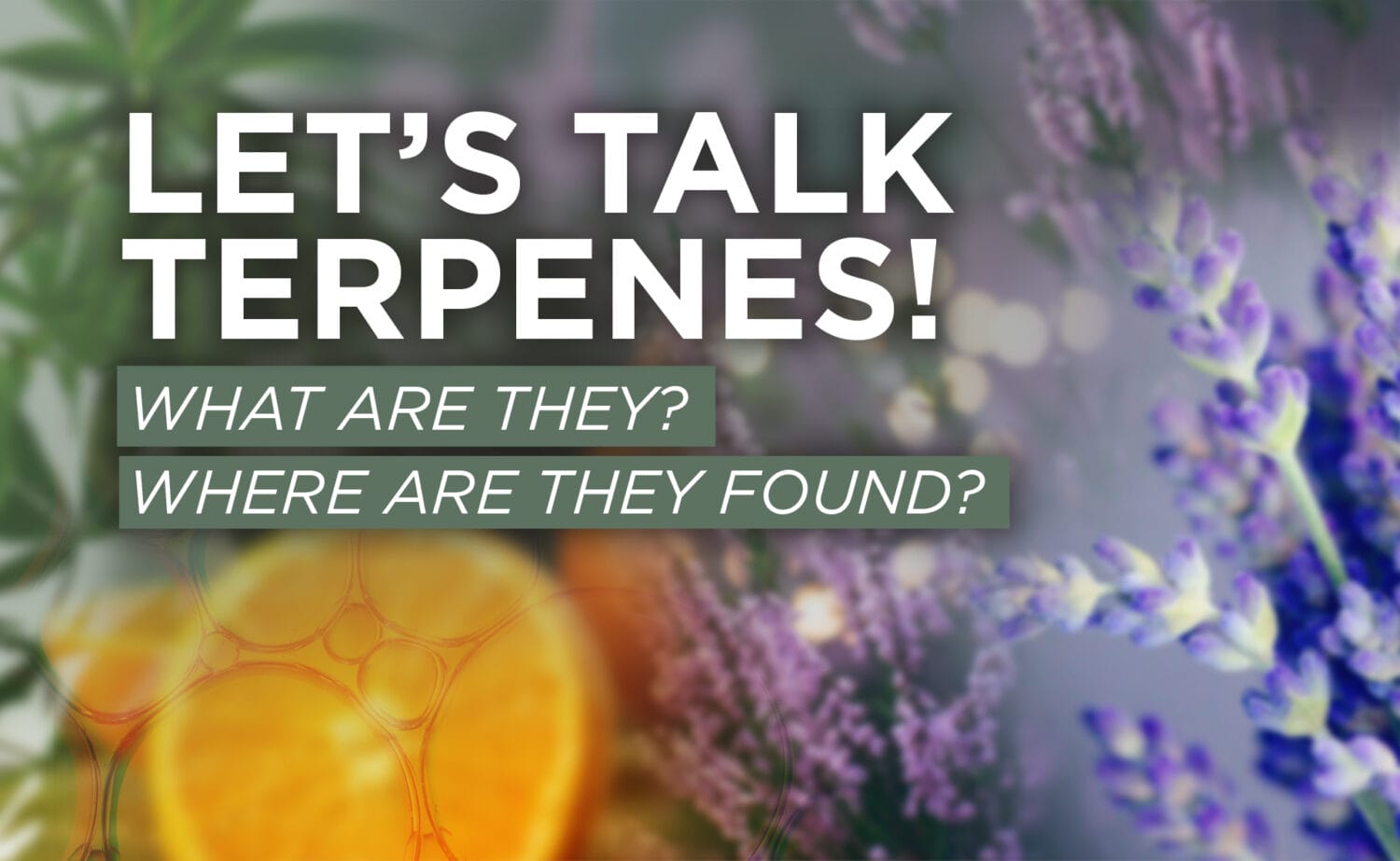Let’s Talk Terpenes
What makes a strain special? Cannabis breeders spend decades developing unique strains with iconic properties. Perhaps the most notable among these important properties is the aroma. Consumers often choose weed by sniffing out the tastiest flavors or THC percentages, but did you know that these unique aromas can also impact the cannabis experience?
Strains smell unique because they contain different combinations of terpenes. Terpenes, or terpenoids, are the natural chemicals responsible for flavor and scent. Terpenes can be found throughout nature and are most common in plants like fruits, herbs, and flowers. Different combinations of terpenes can create different experiences for different consumers. Myrcene and limonene are the two most prevalent terpenes found in West Coast strains, with a myrcene percentage often being key to determining if the strain is Indica-dominant or Sativa-dominant.
As always, users are encouraged to take it slow with new products and pay attention to individual body responses to products.
WHERE ARE TERPENES FOUND?
Plants with terpenes typically have a strong fragrance, taste, and appearance. Plants use terpenes for protection from predators or to attract insects for pollination. People value terpenes for their smell, taste, and flavor. If you’ve ever picked a sprig of lavender or peeled an orange, you’ve smelled the effects of terpenes. Terpenes have been identified throughout the natural world. They are present in virtually all plants, and we’ve barely scratched the surface when it comes to understanding these compounds.
WHAT IS A CANNABIS TERPENE?
Terpenes are not exclusive to a single plant. For example, we can find linalool in many herbs and flowers as well as cannabis plants. Terpenes are responsible for the various flavors and odors which develop on a plant, and this applies to cannabis plants too.
Cannabis strains are divided into two categories, Indica and Sativa. These two groupings are based on hybrid traits the plant has — like taste and aroma. What kind of terpenes a particular strain has and whether those terpenes are primary or secondary is what really determines if a strain is an Indica or Sativa.
8 COMMON TERPENES FOUND IN CANNABIS
#1 – Myrcene
Myrcene is by far the most common terpene in cannabis. It’s found in many strains on the market today, and many (often the majority) feature it quite prominently. Myrcene is commonly found in mangos, lemongrass, and hops – giving them a pleasant earthy, citrusy smell.
#2 – Limonene
Limonene is another prevalent terpene in cannabis and can be identified by its distinct fruity and citrusy smell. Produced in the resin gland of the plant, it’s commonly found in fruit skins and is a keystone for many skincare products, foods, and cleaning supplies.
#3 – Caryophyllene
Caryophyllene is a terpene that gives off an intense spiciness and is commonly found in herbs like basil and oregano. It’s one of the “big three” terpenes in cannabis along with limonene and myrcene.
#4 – Pinene
While not as common as the big three, strains can sometimes contain high levels of this terpene. Pinenes can be found in pine needles, rosemary, basil, and dill, and has a strong scent of pine or forest, as the name implies.
#5 – Ocimene
Ocimene is a terpene that’s found in mint, parsley, mangos, and some flowers. It’s used in many perfumes. It’s more common in Sativa-dominant strains and typically doesn’t play a major role, but it can be found in smaller amounts.
#6 – Geraniol
Geraniol is another terpene with a sweet smell. It smells like the sweet floral notes from citronella oil and is used commercially in many items like ice cream and cherry soda. Geraniol is usually only found in small doses in cannabis.
#7 – Terpinolene
Terpinolene’s flavor profile is more complex than its other common cousins. Not often the star of the show, Terpinolene usually works in tandem with other terpenes to create fresh aromas. Terpinolene is often found in high THC strains as well as lilacs and nutmeg.
#8 – Linalool
Linalool may be a lesser-researched terpene in cannabis, but it is still quite common in the plant world. It has a spicy lavender aroma and often plays a supportive role with major terpenes and cannabinoids. Linalool is found in lavender plants and birch bark.
WHAT NEXT?
We may not fully know yet all the ways that terpenes impact cannabis, but we’re learning more every day. As consumers become more aware of the complexities of their favorite strains, the industry continues to move the search forward. With the help of breeders, growers, and researchers, we have a better understanding of terpenes and cannabis alike.
If you’re curious about the terpenes in your favorite strains, you can also ask an Agate Dreams budtender for recommendations. Knowing the terpene profiles of your favorite strains can help you seek out new and similar cannabis to try in the future!








 are registered trademarks of Suquamish Evergreen Corporation (SEC). Use of the ® symbol herein designates SEC’s trademark rights in association with only those goods and services listed in Reg. Nos. 7,402,321; 7,668,174; 7,668,175; and 7,711,503
are registered trademarks of Suquamish Evergreen Corporation (SEC). Use of the ® symbol herein designates SEC’s trademark rights in association with only those goods and services listed in Reg. Nos. 7,402,321; 7,668,174; 7,668,175; and 7,711,503